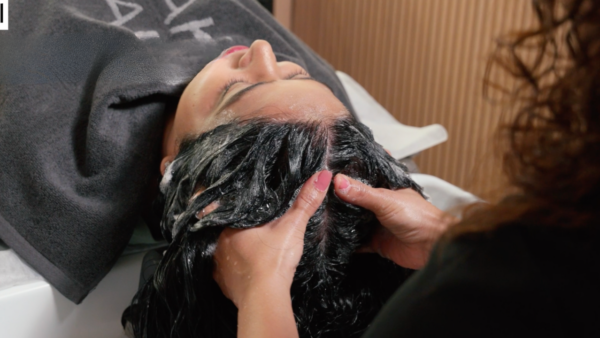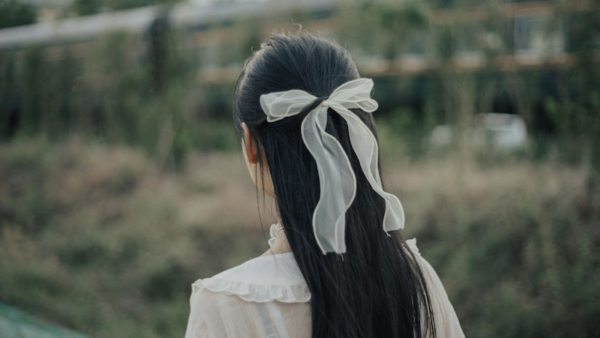To lose a bit of hair post-pregnancy is normal. However, experts recommend this time to reboot your hair care routine and inculcate healthy hair habits to your tresses to press the growth switch.
What is postpartum hair fall?
“During pregnancy, there is an increase in the levels of hormones such as estrogen, progesterone and prolactin and increased blood circulation. This prolongs the growing phase i.e. the anagen phase of the hair cycle and lesser number of hair are shed. Soon after delivering, the hormones fall back to normal and a large number of follicles cycle into the shedding phase i.e. the telogen phase together. This shedding peaks around 4 months post- delivery and is referred to as postpartum hairfall,” says Dr Veenu Jindal, dermatologist and founder, RasaDerm, Delhi.
Post-delivery hair fall is very common states Dr Satish Bhatia, board certified dermatologist MD, FAAD, often due to lack and loss of vitamin B12 and D3. Once you consult your physician and get on supplements, the condition is reversible. “Additionally, there is a physiological increase in the thyroid stimulating hormone or hyperthyroidism which is responsible for hair loss,” adds Dr Bhatia.
However, the good news is that this excessive shedding is temporary. “Most women see their hair return to its normal fullness by their child’s first birthday. Many women regain normal fullness even earlier,” adds Dr Bhatia. “If your hair does not regain its normal fullness after one year, you may want to see a dermatologist as something else may be causing your hair to fall out. People lose hair for many reasons, and an accurate diagnosis is essential for effective treatment,” he cautions.
Why and how your hair texture changes post-delivery?
“During pregnancy, due to increased estrogen and blood flow to the hair follicles, the hair becomes healthier, stronger and smoother. Some people report that their hair changed from curly to straight during pregnancy. It is important to remember that any change in texture during pregnancy is temporary and the hair revert to their original nature as the estrogen levels decline post-partum,” points out Dr Jindal. To maintain hormonal balance, focus on the health inside out. Including a variety of fruits, vegetables, and healthy proteins in your diet is the best way to make sure your body is getting all the nutrients it needs. “Make sure to include foods rich in zinc such as spinach, broccoli, chia seeds and flax seeds and nuts. Also include sufficient amounts of proteins, vitamin A and vitamin E. Supplements containing multivitamins, minerals and herbs like ashwagandha can improve the hair health,” adds Dr Jindal.
Follow these healthy hair habits for speedy recovery
Though post-partum hair fall is quite common and the hair generally returns on its own, but you can speed up the process and use the opportunity to create healthy hair habits to make a full recovery, believes Michelle Ranavat, founder and Ceo of Ranavat. She experienced postpartum hairloss after both of her boys, and had a very visible bald spot. “It is tough mentally because you your hair is such a large part of your identity,” she adds and is very forthcoming about sharing her journey on social media. The post-partum hair loss was like a wakeup call for her and she completely changed her hair habits and in fact delved back to her roots and revived some ayurvedic practices on the way.
Her top tip would be to indulge in a head massage once a week with amla infused hair oil. “Avoid dry shampoos as many of them have synthetic fragrance that can irritate the scalp and cause itching. In fact, reduce the frequency of shampooing your hair. I started to shampoo only once a week and that helped regulate my oil production eventually and by shampooing less, I was able to reduce the hairfall,” she shares. Also, no tight ponytails. Keep your hair down to reduce damage due to styling.
Read labels and select ‘right’ products
Reading labels and selecting the right products is the key in controlling postpartum hair loss and dealing the evolving appearances of hair as the hormones take time to stabilise. “Use a volumizing shampoo. These shampoos tend to contain ingredients like protein that coat the hair, making the hair appear fuller. Avoid any shampoo labeled ‘conditioning shampoo’ as these contain heavy conditioners that can weigh down the hair and make it look limp,” Dr Bhatia recommends. When it comes to conditioners, apply it only to your midlengths and ends to avoid lifeless mass of flat strands. Another trick is to use a conditioner formulated for fine hair if you want a fuller scalp, adds Dr Bhatia. “These contain lighter formulas that will not weigh down hair. Avoid conditioners labeled ‘intensive conditioners’ as these are too heavy and will make your hair appear limp,” he recommends.
Last but not the least, take some deep breaths and schedule some me-time to relax!
This article first appeared in Vogue





